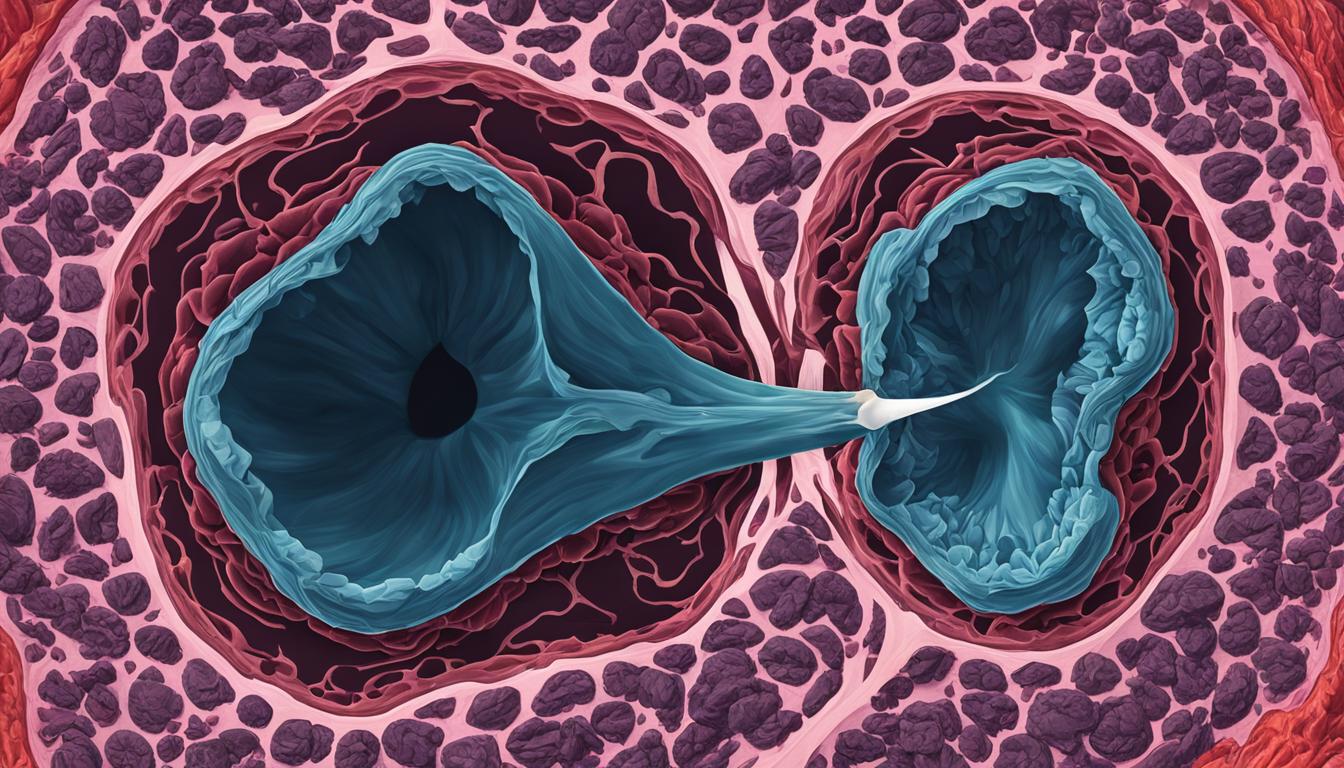Welcome to our informative article where we explore a common question among men who have undergone transurethral resection of the prostate (TURP) for the treatment of prostate enlargement. Many patients ask, “Can the prostate grow back after TURP?” This is an important concern to address, as understanding the potential for prostate regrowth can help patients make informed decisions about their treatment options and long-term management strategies.
Before we delve into the topic, here’s a brief overview of TURP for those who may be unfamiliar with the procedure. TURP is a surgical technique commonly used for the management of benign prostatic hyperplasia (BPH), a condition characterized by an enlarged prostate gland that can cause bothersome urinary symptoms. During TURP, a thin tube with a light and cutting tool is inserted through the urethra to remove excess prostate tissue, relieving urinary obstruction and improving urine flow.
Now, let’s address the question at hand. Can the prostate grow back after TURP? While TURP is an effective treatment for prostate enlargement, studies have shown that a certain percentage of patients may experience persistent or recurrent voiding symptoms that require further therapy. It is important to note that regrowth of prostatic tissue can occur, leading to a return of urinary symptoms.
Key Takeaways:
- About 15-20% of patients may experience persistent or recurrent voiding symptoms after TURP.
- Factors such as age, hormone levels, and inflammation can contribute to prostate regrowth.
- A complete urodynamic assessment is necessary to guide appropriate therapy.
- In-office procedures like TUNA and repeat TURP can effectively manage prostate regrowth.
- Close collaboration with healthcare providers is crucial for individualized management decisions.
Factors Affecting Prostate Regrowth After TURP
Several factors can contribute to the regrowth of the prostate after Transurethral Resection of the Prostate (TURP). Age, obesity, testosterone levels, and inflammation have been identified as potential risk factors.
“Age, obesity, testosterone levels, and inflammation”
A cohort study found that these factors play a role in prostate volume progression after TURP. Older age, higher testosterone levels, higher prostate-specific antigen (PSA) levels, and elevated levels of tumor necrosis factor-alpha (TNF-α) and transforming growth factor-beta (TGF-β) were associated with increased prostate volume.
| Risk Factors | Association with Prostate Regrowth |
|---|---|
| Age | Older age is positively correlated with prostate volume progression after TURP. |
| Obesity | No specific association has been established between obesity and prostate regrowth after TURP. |
| Testosterone Levels | Higher testosterone levels are positively correlated with prostate volume progression after TURP. |
| Inflammation | Elevated levels of TNF-α and TGF-β are associated with increased prostate volume after TURP. |
These findings highlight the significance of hormonal and inflammatory factors in the regrowth of the prostate following TURP.
Preventing Prostate Regrowth
While some risk factors like age cannot be modified, maintaining a healthy lifestyle, managing obesity, and addressing inflammation levels may help reduce the likelihood of prostate regrowth after TURP. Regular follow-up with a healthcare provider is essential to monitor prostate health and address any potential complications.
Comparing TURP and TUNA as Treatment Options
When considering treatment options for benign prostatic hyperplasia (BPH), Transurethral Resection of the Prostate (TURP) is often regarded as the gold standard surgical management. However, it’s essential to be aware of certain considerations associated with TURP, such as the risks of anesthesia and retrograde ejaculation. Additionally, it’s important to note that TURP is not a permanent solution, as the majority of men will experience regrowth of prostatic tissue and worsening lower urinary tract symptoms after 7 to 10 years.

As an alternative treatment option, Transurethral Needle Ablation (TUNA) has shown promising results in effectively eliminating excess prostatic tissue. TUNA can be performed after TURP and is a low-risk procedure that can provide relief from urinary symptoms caused by regrowth of the prostate.
Comparing TURP and TUNA:
| Treatment Option | Advantages | Disadvantages |
|---|---|---|
| TURP | – Considered the gold standard for BPH surgery – Provides immediate relief from urinary symptoms |
– Risks associated with anesthesia – Potential for retrograde ejaculation – Regrowth of prostatic tissue and worsening symptoms over time |
| TUNA | – Eliminates excess prostatic tissue effectively – Low risk procedure – Provides relief from urinary symptoms caused by regrowth |
– May require additional treatment if regrowth is significantly asymmetric |
While TURP remains the gold standard, TUNA offers a viable alternative for patients seeking relief from urinary symptoms caused by regrowth of the prostate. It is important for individuals to consult with their healthcare providers to determine which treatment option is most suitable for their specific situation.
Post-TURP Management Options for Prostate Regrowth
If you notice a recurrence of urinary symptoms following a TURP procedure, there are several management options available to address the regrowth of prostatic tissue. These options aim to alleviate your symptoms and improve your overall quality of life. The choice of management will depend on the extent and nature of the regrowth.
To evaluate the regrowth of prostatic tissue, your healthcare provider may recommend a cystoscopy. This procedure involves the insertion of a thin tube with a camera into the urethra to visualize the bladder and prostate. By assessing the severity and symmetry of the regrowth, your healthcare provider can determine the most appropriate course of action.
If the regrowth is relatively symmetric, an in-office procedure known as Transurethral Needle Ablation (TUNA) may be an ideal option for you. TUNA utilizes low-level radiofrequency energy to heat and destroy excess prostatic tissue. This procedure is minimally invasive, has a low risk of complications, and can provide relief from urinary symptoms caused by regrowth of the prostate.
However, if the regrowth is significantly asymmetric, a second TURP procedure may be necessary. Repeat TURP has been shown to effectively treat asymmetrical regrowth and improve urinary symptoms in such cases. Your healthcare provider will assess the risks and benefits of a repeat TURP based on your individual circumstances.
It is important to note that both TUNA and repeat TURP procedures have proven to be effective in managing prostate regrowth and improving urinary symptoms. Your healthcare provider will work closely with you to determine the most appropriate management option based on your specific needs and preferences.
Post-TURP Management Options at a Glance:
| Management Option | Description |
|---|---|
| TUNA (Transurethral Needle Ablation) | An in-office procedure that uses low-level radiofrequency energy to destroy excess prostatic tissue. |
| Repeat TURP | A second transurethral resection of the prostate procedure performed to treat asymmetrical regrowth of the prostate. |

When facing prostate regrowth after TURP, it is essential to consult with your healthcare provider to explore the most suitable management option for your recovery and overall well-being. Together, you can formulate a plan that addresses your specific needs and ensures a successful outcome.
Conclusion
Prostate regrowth can occur after undergoing a transurethral resection of the prostate (TURP) procedure, with approximately 15 to 20% of patients experiencing persistent or recurrent voiding symptoms. Age, testosterone levels, prostate-specific antigen (PSA) levels, and inflammatory markers have been identified as factors contributing to prostate volume progression after TURP.
Fortunately, there are treatment options available to manage prostate regrowth and its associated symptoms. In-office procedures like Transurethral Needle Ablation (TUNA) and repeat TURP procedures have shown effectiveness in addressing the regrowth of the prostate. These treatments can provide relief and improve urinary symptoms caused by regrowth after TURP.
When dealing with prostate regrowth after TURP, it is essential for patients to collaborate closely with their healthcare providers to determine the most suitable management option for their individual case. By exploring the available options and tailoring the treatment approach, patients can effectively address prostate regrowth and minimize its impact on their overall quality of life.
FAQ
Can the prostate regrow after TURP?
Yes, there is a possibility of prostate regrowth after transurethral resection of the prostate (TURP) for benign prostatic hyperplasia (BPH).
What are the factors that contribute to prostate regrowth after TURP?
Age, obesity, testosterone levels, and inflammation have been identified as potential risk factors for prostate regrowth after TURP.
What are the differences between TURP and TUNA as treatment options?
TURP is considered the gold standard surgical management for BPH, while TUNA (Transurethral Needle Ablation) is an alternative procedure that can effectively eliminate excess prostatic tissue.
What are the management options for prostate regrowth after TURP?
If urinary symptoms return after TURP, options such as in-office procedures like TUNA or repeat TURP procedures can be considered to manage prostate regrowth.
Is TURP a permanent solution for prostate enlargement?
No, TURP is not a permanent solution, as the majority of men may experience regrowth of prostatic tissue and worsening lower urinary tract symptoms over time.
Does TURP Treatment Increase the Risk of Prostate Regrowth?
Many studies have explored the link between TURP and prostate cancer risk. While some research suggests a potential association, more evidence is needed to draw a definitive conclusion. Patients should consult with their healthcare provider to understand the potential risks and benefits of TURP treatment for prostate regrowth.



